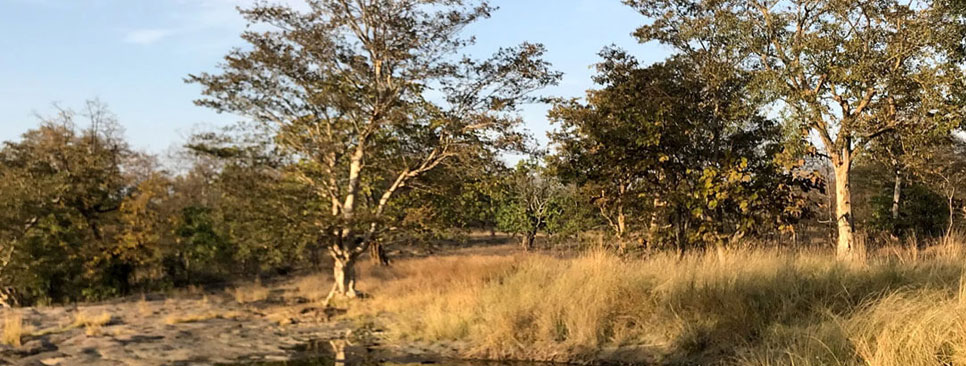Flora in Panna National Park
Nestled in the Vindhya Hills of Madhya Pradesh, Panna National Park is renowned not only for its diverse wildlife but also for its rich and vibrant flora. Spanning over 542.67 sq km, the park features a mix of dry deciduous forests, grasslands, and riverine ecosystems, making it home to a variety of plant species. These plants not only support the park's wildlife but also play a crucial role in maintaining the ecological balance of the region. The unique terrain and climate create a haven for both indigenous and medicinal plant species, adding to the park's ecological significance.
Panna National Park is characterized by expansive plateaus and deep gorges, with its topography segmented into three distinct regions: the Upper Talgaon Plateau, the Middle Hinauta Plateau, and the Ken Valley. Additionally, the Ken River Valley is flanked by undulating hills, contributing to the park's diverse and scenic landscape. The region's warm, arid climate, coupled with shallow Vindhyan soils, supports the growth of dry teak forests and dry mixed deciduous forests, further enhancing the ecological diversity of the park.

Notable Flora in Panna National Park
- Teak (Tectona grandis) - It is a type of large, deciduous tree found in mixed hardwood forests. This tropical hardwood tree species belongs to the family Lamiaceae.
- Salai (Boswellia serrata) - Known for its medicinal properties, the Salai tree is found throughout Panna. The gum resin extracted from this tree is used in traditional medicines.
- Indian Ghost Tree (Sterculia urens) - It is a deciduous tree growing in dry rocky hills in central and northern India.
- Mahua (Madhuca indica) - It is an Indian tropical tree found in central, southern, and northern India, and has medicinal uses. The bark treats leprosy and heals wounds, the flowers relieve coughs and heart-related issues, and the fruit is given for consumption and blood diseases.
- Tendu (Diospyros melanoxylon).- Diospyros melanoxylon is a tree or shrub of medium size that may shed its leaves in drier areas and retain them in moister regions.
- Indian Gooseberry (Phyllanthus emblica) - The Indian Gooseberry, or Aonla, is commonly found in the park and is valued for its high vitamin C content and medicinal uses.
- Kardhai (Anogeissus pendula) - This drought-tolerant species is well-adapted to the dry conditions of Panna. Kardhai is commonly found in the park’s hilly terrains.
- Bel (Aegle marmelos)- Sacred in Indian culture, the Bel tree bears fruit that is used in both religious rituals and traditional medicines. It is commonly seen along the park’s water sources.
- Jamun (Syzygium cumini)- Jamun trees are known for their dark purple fruit, which attracts both wildlife and visitors. These trees are often found near water bodies.
- Khirni (Manilkara hexandra)- A medium-sized tree, Khirni produces sweet edible fruits that are a food source for several animals in the park, especially during the summer.
- Bamboo (Dendrocalamus strictus)- Bamboo clusters are widespread in Panna’s lower forest regions, providing shelter and food for many species, including herbivores like elephants and deer.
- Dhawa (Anogeissus latifolia)- Common in the park, Dhawa trees are recognized for their thick, leathery leaves and are frequently used for timber.